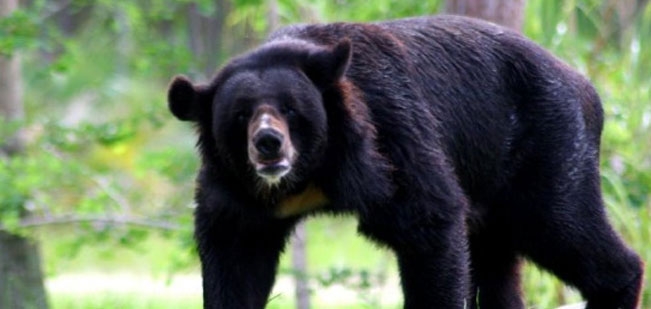Scientific classification: The sloth bear belongs to the family Ursidae in the order Carnivora. It is classified as Melursus ursinus.
Introduction
The Sloth Bear are a common name for a bear with very shaggy, long fur; a rather flattened head; and a large, whitish, U- or V-shaped patch on its chest. The name derives from the bear’s slow movements. The sloth bear ranges throughout the Indian subcontinent and Sri Lanka.
Characteristics
Sloth bears grow to about 1.8 m (6 ft) and weigh 54 to 140 kg (119 to 310 lb), depending on the time of year. Sloth bears are well-adapted for extracting insects, especially termites, from holes: The five claws on each foot are very long, to help in digging; the hair on the face is short; the lips and snout are flexible; and the nostrils can close.
Little is known about the sloth bear’s reproductive habits. Breeding may occur mostly in April, and the young are born in early winter. Young sloth bears often ride on their mothers’ backs, clinging to the long hair. The mothers can be aggressive, but they seldom pose a real threat. The young stay with their mothers at least until the second year. Except for family groups, sloth bears are solitary.
Bear Behavior
The key to a bear’s survival is finding enough food to satisfy the energy demands of its large size. Sloth Bears travel over huge territories in search of food, and they remember the details of the landscape they cover. They use their excellent memories to return to locations where they have had success finding food in past years or seasons. Most bears are able to climb trees to chase prey or gain access to additional plant vegetation. The exceptions are polar bears and large adult brown bears their heavy weight makes it difficult for them to climb trees.
Little is known about communication among bears. Vocalizations and movements of the mouth and ears appear to be communication methods used by most species. Scent marking for communication is done by urine or by rubbing trees. When they need to act threatening or fight, bears tend to stand up on their hind legs, perhaps to appear larger to their rivals. They use their clawed forepaws to slash at their opponents.
Conservation
In Sri Lanka, sloth bears are almost extinct; in many parts of India, their status is precarious. Their fondness for fruits can deplete the local supply. Like the Asiatic black bear, they are hunted for their gall bladders and other body parts. Research and conservation efforts have been limited. Their small range makes them more vulnerable than most other bears.

